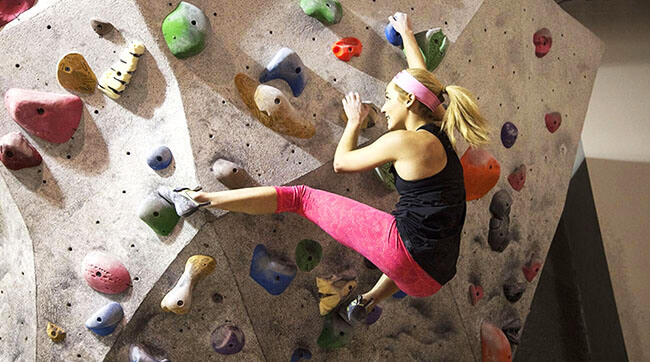5 Tips to Improve Your Bouldering
Date: 2018-04-04 Share Us:
Bouldering is one of those activities that comes fairly naturally and most people have a pretty good idea what to do. However, if you feel like you've hit a plateau and can't raise your game, then it may be worth having a look at this quick 5 tips for improving your performance. It only takes an over-sight of one or two things to cause your entire performance to be dragged down.

1. Mental skills - reading and reviewing the sequence
The first step for newcomers is to resist the temptation to jump straight on and work it out as you climb. There simply isn't enough spare strength or skin on your fingertips for this and it always pays to have a good look at the holds first and try to plan a sequence. Most intermediates will do this by habit, but it's amazing how few will attempt to link a foot sequence in with a hand sequence. The reason most don't bother is because they usually guess wrong, but it's amazing how your ability to predict the sequence in fine detail will improve with practice. Don't get tunnel vision once you start working the problem and remember to consider other options when you're resting between attempts. You may have found the heel-hook round the arête but would a toe-hook work better? How about flagging to save time instead of swapping feet and changing to an outside edge? It may be a sloper but have you tried crimping it? You may be on the biggest smear, but is it in the best position? These are just some of the classic review questions from an endless.
2. Tactics - resting, brushing and skin care
The answer to how long you should rest between attempts at a boulder problem is longer than your natural instinct dictates. Don't let frustration get the better of you and resist the temptation to keep jumping back on and thrashing. If you're bouldering in a small group and things are getting competitive then one of the best ways to bag the problem first is simply to miss your turn when it comes round! A good rule of thumb for hard projects is to rest a minute for each move that you manage to link. For long bouldering sessions you should take ten or fifteen minute breaks every half hour or so. Most boulderers know the importance of brushing the holds but few use a swat rag. These are great for removing excess dust and cooling the holds down to improve conditions. Be meticulous when you clean your feet and keep tipping up the crash pad regularly so that it stays spotless. Keep a constant eye on your skin and be disciplined enough to call time before you rip the flapper. Use beeswax and vitamin E based creams such as Climb On bars between sessions.
3. Variety - different holds, moves and angles
When you're training and when you're at the crag, the best way to prolong bouldering activity at a high level is to switch between different styles of problem. A simple example is to do slabs in order to rest from overhangs, but a more subtle one is to switch from a crimpy problem to a slopey one, or from a static 'locky' problem to a dyno. Not only will this help prevent premature burn-out but it will ensure that you develop versatile technique and that all the necessary moves and muscles are trained. The other obvious point is to boulder both indoors and outdoors and to climb on a mix of different rock types.
4. Training - specific bouldering for strength / power
A classic mistake is to think that the steepest angle possible is best for strength training. The optimum angle is the steepest possible angle on which you can use finger holds. These don't have to be tiny – they can be medium sized and slopey or rounded but they mustn't be jugs. If you're swinging around on jugs then you won't be working your fingers and finger strength should always be the greatest priority. It is also best to use the smallest possible footholds to work body tension and footwork accuracy. Stronger climbers may wish to try footless bouldering to increase the intensity, but don't go over-board with this because the crucial body tension element is lost. Another worthwhile training tweak is to try 'system' style boulder problems where you set a rule such as cutting loose and replacing your feet between each move or holding a lock-off and 'hovering' over the next hold for a few seconds.
5. Planning and training structure
If you're only into bouldering then putting training plans together is pretty straightforward. However, if you want to climb on consecutive days then be sure to change the style of bouldering or the intensity to avoid repetitive strain. A good example is to do shorter problems with harder moves on day 1 and then to do longer easier problems on day 2. Alternatively try fingery problems on day 1 and juggy problems on day 2. If you wish to mix bouldering with routes then avoid doing so in the same session as it sends confusing training stimuli to the body. If you wish to train on consecutive days then do bouldering on day 1 and routes on day 2. If your soul focus is to get strong then don't keep hammering the same combination indefinitely. Push your training forward in waves where you go all-out for a few weeks and then come off the gas to allow recovery.
(Posted by Neil Gresham)
Prev:Racing Now
Next:DEAL 2018 Starts Now